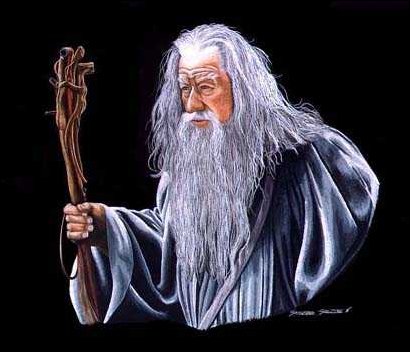In discussing the shortcomings of The Da Vinci Code, the points made will, of necessity, be much more specific. I will avoid the trivial points raised by many Brown critics (such as there not being 666 windows in the Louvre or his incorrect dating of some documents) or the non-trivial but not central (such as the fact that Leonardo could not have intended the name of the painting Mona Lisa to be an anagram for Egyptian divinities since he did not call it the Mona Lisa, which was a name given the painting in a later time), but instead focus on the important claims in his book that realate directly to his thesis- that Jesus and Mary Magdalene were married, had a child or children, that these children formed a royal bloodline in France, and that the Church has worked fererishly to keep this secret away from Christians.
- Emperor Constantine and the Council of Nicea did not create the notion that Jesus was divine. The notion of Jesus' divinity is found in documents that go back to the first century B.C.E. The canonical gospels contain such explanations of Jesus. While some of the gnostic works emphasize Jesus humanity, many focus on his divinity. Some works, for example, have a dual notion with there being a Jesus (the physical, human figure who died on the cross) and the Christ (the divine spirit who inhabited the body of Jesus but departed from him before his death on the cross). The Gospel of John, a canonical work, most clearly states the concept of Jesus divinity, and this was written nearly 200 years before Constantine and the Council of Nicea. The divinity of Jesus was a given at the Council of Nicea. The effort to resolve disputes over the exact nature of the divinity were dealt with, but divinity was accepted by the church at this time. If Constantine and the Council of Nicea did not create the notion of divinity of Jesus, they certainly did not do so to cover-up a human marriage between Jesus and Mary Magdalene.
- Nor did Constantine or the Council of Nicea create the biblical "canon" and reject some 80 other "gospels." Constantine did not choose and finance a canonical Bible, as Brown claims. The canon arose through a process much more free-wheeling and complex than Brown's claim that it was created by a simple declaration. Again, if Constantine and the Council of Nicea did not create the canon, there is no cover-up.
- The Secret Dossier of the Priory or Sion is a known fraud. The group called the Priory of Sion has not had a continuous existence since 1099 as Brown claims. The documents that make the claim to such a history were the creation of a Pierre Plantard at some point in the middle of the 20th century. He then put them in the Bibliotech National in France. Then he "discovered" these "secret" documents in the national library in the middle 1970s. I don't even know where to begin with how ridiculous this is- with placing documents of a secret society that they are willing to die for in a national library; with then allowing them to be released to people like the authors of Holy Blood, Holy Grail (from which Brown draws much); with the fact that Pierre Plantard made sure to add his own name to the royal bloodline (making him a descendent of Jesus). For a so-called secret society, the Priory of Sion did a lousy job (as did its alleged Grand Master Leonardo da Vinci if he in fact gave away all the secrets in his paintings as Brown and others now allege). If the Priory of Sion has not existed for hundreds of years to protect the secret, then the question of whether the secret exists is seriously called into question.
- There is not a "historical record," certainly not a long one, as Brown has Teabing say in the novel, that Jesus and Mary were married. Teabing says he will not "bore" us with citing all the multitude of sources. I wish he would, because I'm not aware of any. The sources cited by Brown in the book and by others who make the claim are found in primarily in the Gospel of Phillip (and somewhat the Gospel of Mary where it is said, as in Phillip, that Jesus loved Mary more than others). These sources rely on pretty loose interpretation to support his claims. In one citation from Phillip, Brown says that the document tells us the Jesus "kissed [Mary] often on the mouth." Problem is, the word mouth is not in the text. Inconveniently, the work that would tell us where she was kissed is missing from the centuries old document. It could just as likely say "cheek", or "forehead"- even "hand". Kissing a woman on the cheek may have been notable (controversial?) in Jesus' day, but surely less provocative, less sexual, than kissing her on the mouth. Brown also says, correctly, that Phillip says that Mary was Jesus' "companion." This, Brown says (through Teabing), any Aramaic scholar would tell you means "spouse" when examined in Aramaic (the language Jesus and his disciples would have spoken). The problem here is that the Gospel of Phillip was not written in Aramaic, but probably originally in Greek, and the only existing copy is in Coptic (an Egyptian language in which most of the gnostic works we have were written). To translate the Coptic word to English, and then the English word into Aramaic is not a particularly fine piece of logic. Instead, it is an example of twisting the evidence to get the result desired in advance. The evidence of a traditional belief in Mary as "the grail" that was suppressed by a church jealously guarding its power simply does not exist. There is no canonical or ancient non-canonical work that says or even strongly indicates that Jesus and Mary was married. (And, by the way, the notion that Jesus may not have been married is not so absurd as Brown makes it sound. He says that Judaism virtually forbade celibacy. Well, celibacy is not the norm among any large society. However, the Essenes, generally associated with the Dead Sea Scrolls, which Brown mentions in the book, practiced celibacy. It did happen, and it happened during the time period in which Jesus lived.) In this case there is no cover-up because there isn't anything to cover-up.
- In Leonardo's Last Supper, there is no valid reason to believe that it is Mary Magdalene rather than "the beloved disciple" John to Jesus' right. The church folklore about John is that he was very young during Jesus' life, which is what allowed him to still be alive late enough to have written the Gospel of John. While the figure in question in the painting does look feminine, this is not at all uncommon in paintings of Leonardo's era- this is how young men were generally portrayed. But let's suppose, jut for a moment, that Brown is correct: the figure is clearly a woman (with even evidence of a bosom, as the book says). As a Grand Master of an organization willing to keep this matter a secret to their death, why would Leonardo paint this so obviously, at least in Brown's estimation, on a wall for anyone to see? Wouldn't that put his secret in jeopardy? (This is a common flaw in conspiracy theories- the oxymoronic argument based on an "obvious secret.") Here, if Leonardo was a part of a cover-up, he did a terrible job. But, in the labored logic of a conspiracy theorist, perhaps the failure to cover up is evidence of a cover-up?
Brown's work is absolutely dependent upon all of the issues mentioned above to support his thesis. Take them away, and all you have left is a quest/thriller novel. And, that is all that you have when you read the book.
My objections to Brown are not so much religious. Is it possible that Jesus married? Anything's possible. My objections come more from the area of a historian interested in truth. Brown published his "FACT" page at the front of his novel. Nothing that he mentions on that page can withstand the scrutiny of anyone interested in pure facts. His descriptions of buildings, organizations, and documents are all flawed. So much for his claim to "FACT."
Why would I not be religiously undone if Brown's claims were true? Brown says the the Priory of Sion was devoted to protecting a secret, and Opus Dei and "The Church" so devoted to destroying that secret, because it was so earth shaking that it would destroy the church. Well, his book has been out for 3 years. Holy Blood, Holy Grail has been out for nearly 30, as I recall. The secret has been revealed. And the Church still stands. Therein lies the lesson for us. Our faith cannot be shaken by such claims. There is no need to call for a boycott. No need to picket. We can all use this as an opportunity to explore our faith, to look into our church's history, to examine documents that, it is true, some have not wanted us to see. To explore who Jesus was and is. To refuse to accept the received wisdom, but instead to determine for ourselves how we will relate to God, and how best to create His Kingdom here on Earth.
GP


No comments:
Post a Comment